Digital Foundry vs. Uncharted 3
"We're only limited by our imaginations."
"We felt really good about that game as it came together. We felt that we had something really special on our hands but I don't think we were prepared for the scale of the rapturous reception we got. So how do you top something like that?"
Digital Foundry recently had the opportunity to sit down and chat with Naughty Dog co-lead designer Richard Lemarchand, the writer/presenter of the brilliant Among Friends talk we adapted into what remains our favourite article on the site. Discussing the immense popularity of the game, we couldn't fathom how the developer team could begin the process of following it up.
Uncharted 2 was the game that changed everything, redefining the third-person genre, setting new standards in technology, production values, characterisation and gameplay. Its legend is so powerful that any faults it may have had are perhaps forgotten in a haze of happy nostalgia. Its deserved success at the time was unparalleled, and for us it remains one of the principal reasons for owning a PlayStation 3 - the ultimate first-party console exclusive. The pressure on Naughty Dog to follow up on that must have been tremendous.
"I think really each one of us has reacted to it differently," reflects an earnest Lemarchand. "We all felt the pressure to rise to the challenge of making something as good as or better than Uncharted 2, but my philosophy has been that if you have spent your time doing whatever kind of work you do, really focused on the work with the goal of not working towards any kind of secondary goals like praise or awards or anything but just trying to do the best that you can in your craft, that is the real key to success.
"That was certainly the way that we made Uncharted 2. We'd made a good first run on it with Uncharted: Drake's Fortune and we'd learned a huge amount in making it, and we just set to it and applied ourselves with gusto. We came to it with what Zen Buddhists call the 'Beginner's Mind', not resting on any laurels, not making any assumptions."
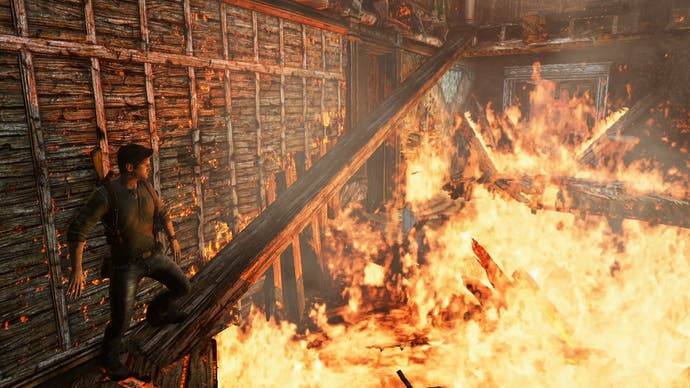
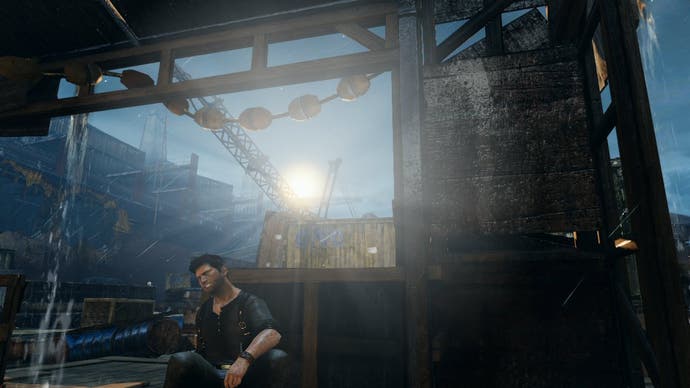
Bare-Fisted Brawling
Readers of Among Friends may recall that Naughty Dog retains focus on its projects by sticking to a series of core design goals. For the new game, hand-to-hand combat gets a renewed focus.
"We had expanded the role of melee combat over the three games but we really wanted to foreground it at a number of points throughout Uncharted 3 so we put a lot of time and effort into developing the system," Lemarchand tells us.
"It's a system that isn't too convoluted but I think has enough depth and richness in it to support the sequences that we use it in and really bring the flavour of bare-fisted action to the game - bare-fisted combat is a very important trope in the genre of pulp action movies."
It's also an element that serves to kick off the story, as Drake and Sully brawl in a London pub - the sequence serving to introduce the player to the basic punch, dodge and escape buttons. On the surface it's a fairly basic button-masher, and throughout the game there's a lot of repetition, but the fun comes from relocating the brawling to different areas of the environment and fishing out the area and object-specific moves. Hand-to-hand combat has also evolved to be far more integrated with gunplay, adding to the variety in general gameplay.
Technological Evolution
From a technological perspective, Naughty Dog hasn't rewritten the book in quite the same way that it did with Among Thieves - there's no leap quite as pronounced as there was with the introduction of the Dynamic Objects Traversal System (DOTS) that allowed gameplay to take place on moving objects. Instead there has been a radical evolution of those same systems, allowing for the even more ambitious set-pieces and physics-based puzzling and action.
"One of the first things that we did in the development of Uncharted 3 was to extend this [DOTS] system beyond objects that are simply animated towards objects that are now physics-driven. This created a whole bunch of new possibilities," Lemarchand shares.


"You may have seen the cruise ship level. What people may not realise is that it's not just a big object that we are animating, it's one enormous physics object whose movement is driven by another dynamic system we have in the game: our new dynamic sea system. So each time that Drake rocks around on the deck of that ship the movement he is subject to is unique."
Perhaps the most impressive element of the new technology in Uncharted 3 is the way in which its most impressive effects are based around natural elements and materials: the various water systems in the cruise ship, the way that fire acts as a dynamic light source when Drake holds a torch, the atmospheric rendering of smoke - recreating natural elements like this and making them look so realistic is no mean feat, but it's the area in which Naughty Dog excels. For a game where the desert is so important, Naughty Dog's implementation of sand in terms of pixel shaders and surrounding effects work is nothing short of remarkable.
It's not just the look of the effects, it's their application in terms of gameplay. The cruise ship is the highlight of the water technology: the animation of the ship itself within the ocean, plus the rushing water of the breached hull, even the water in the swimming pool is sublimely animated. However, preceding this stage are areas of gameplay where Drake is in direct contact with the ocean, where the height of the water-line itself can be of crucial importance in deciding where to go next, what to do, and whether a stealthy approach is viable or not.
Fire is the most destructive of the elements and it is here that Naughty Dog does some of its best work, marrying the uncanny effect with some excellent use of the destruction system that sees scenery collapse, breaking into component pieces and literally razing the impressive Chateau level to the ground.


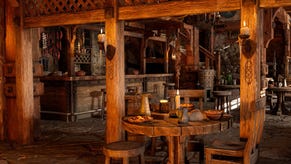

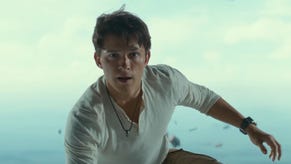
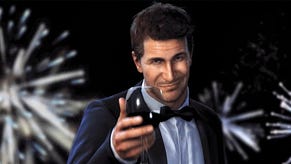

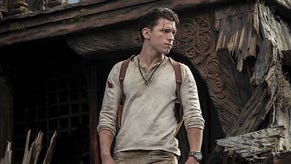
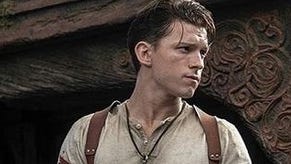





.png?width=291&height=164&fit=crop&quality=80&format=jpg&auto=webp)

